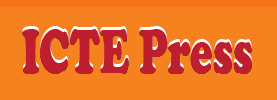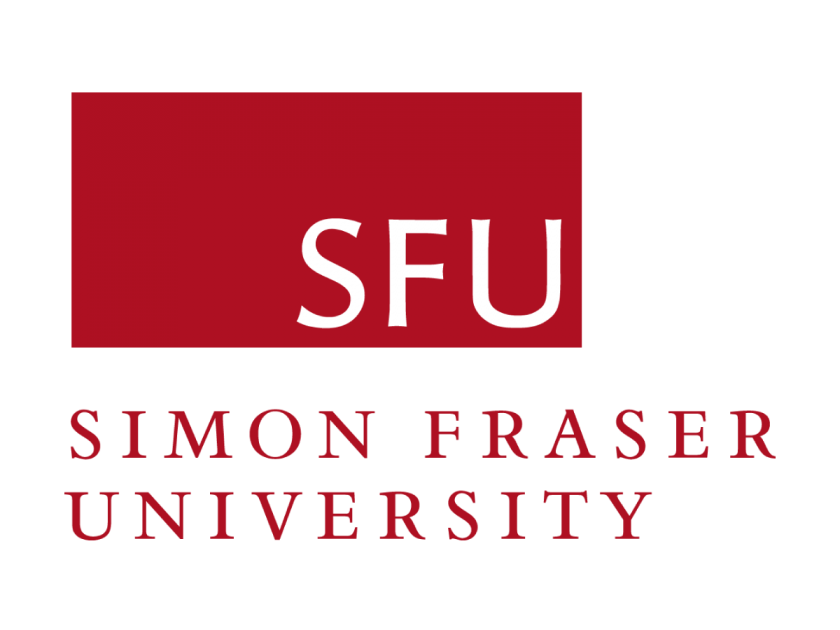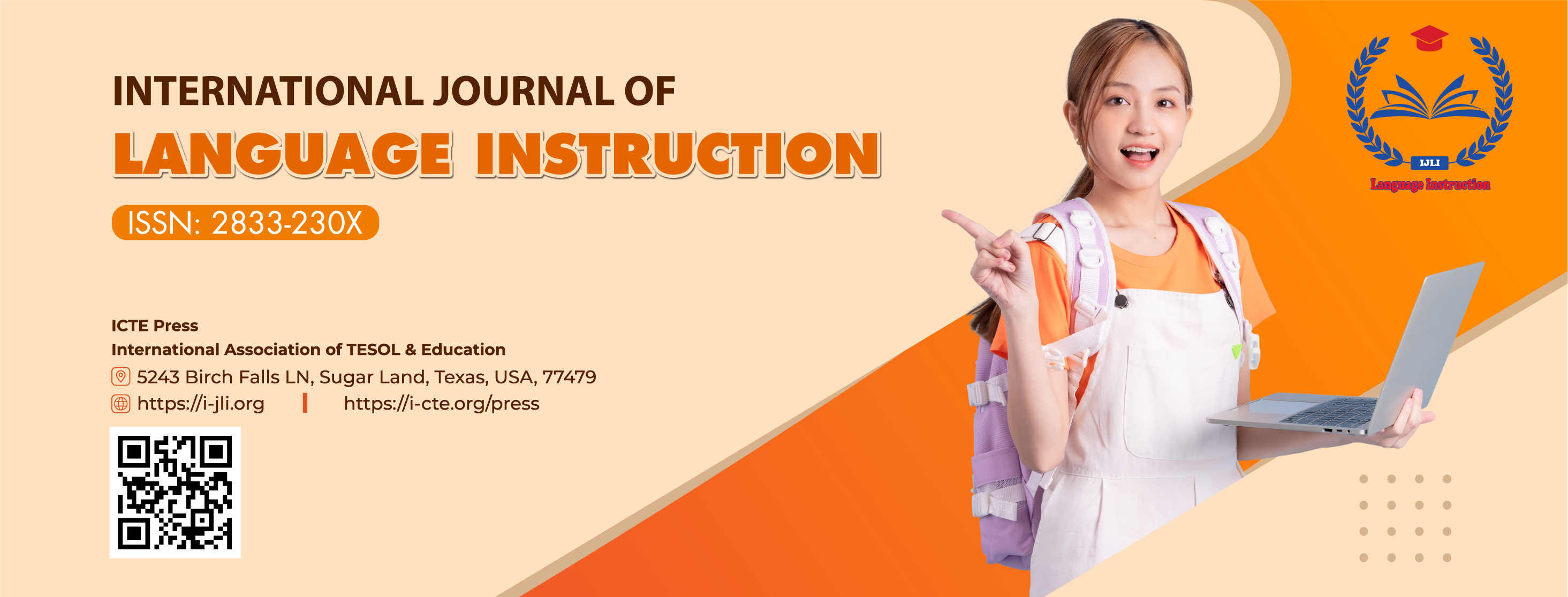Investigating High School Students’ Attitudes Towards Friends Global Textbook
DOI:
https://doi.org/10.54855/ijli.25425Keywords:
General Education English Curriculum 2018, textbook evaluation, attitudes, learners’ needs, Friends Global textbookAbstract
Vietnamese Ministry of Education and Training’s nationwide English educational reforms have introduced a new English textbook series aimed at enhancing students’ communicative competencies. Although extensive research has evaluated these English textbook series based on the General Education English Curriculum 2018, it has focused solely on educators’ perspectives. Therefore, the purpose of this study was to investigate the high school students’ cognitive, affective, and behavioral attitudes towards one of those series, the Friends Global textbook, regarding learners' needs. Utilizing a mixed-method design, the study combined questionnaire data from 226 grade-ten and grade-eleven students with insights from semi-structured interviews with eight participants. Findings reveal that students generally hold positive attitudes towards the textbook’s reading skills, vocabulary, and grammar but display ambivalence towards speaking, listening, and writing skills and are opposed to phonology. These results offer valuable insights for the Ministry of Education and Training, textbook authors, and ELT educators, supporting future curriculum development, textbook evaluation, and instructional planning.
References
Allport, G. W. (1935). Attitudes: a handbook of social psychology. USA: Worcester Mass.
Anvik, T., Gude, T., Grimstad, H., Baerheim, A., Fasmer, O. B., Hjortdahl, P., . . . Vaglum, P. (2007). Assessing medical students’ attitudes towards learning communication skills – which components of attitudes do we measure? BMC Medical Education, 7(4), 1-7. https://doi.org/10.1186/1472-6920-7-4
Brannen, J. (2017). Mixing methods: Qualitative and quantitative research. Ashgate Publishing. https://doi.org/10.4324/9781315248813
Breckler, S. (1984). Empirical Validation of Affect, Behavior, and Cognition as Distinct Components. Journal of Personality and Social Psychology, 47(6), 1191-1205. https://doi.org/10.1037/0022-3514.47.6.1191
Bruder, M. N. (1978). Evaluation of Foreign Language Textbooks: A Simplified Procedure. In H. S. Madsen, & J. D. Bowen, Adaptation in Language Teaching (pp. 209-218). Newbury House Publishers.
Bui, D. H., & Truong, V. A. (2021). Coursebook: Sociolinguistics. Nhà xuất bản Đại học Quốc gia Thành phố Hồ Chí Minh.
Bui, T. H. (2022). A Theoretical Evaluation of the English Textbooks for Grade 12 Students under the National Foreign Language Project 2008 - 2020. TESOL Communications, 1(2), 34-64. https://doi.org/10.46451/tc.20220203
Bui, T. K. L. (2024). Findings of Using Schema-Building Activities to Improve EFL Learners’ Listening Comprehension. International Journal of Language Instruction, 3(4), 1-19. https://doi.org/10.54855/ijli.24341
Creswell, J. W., & Creswell, J. D. (2018). Research design: qualitative, quantitative, and mixed methods approaches. SAGE Publishing.
Cunningsworth, A. (1979). Evaluating course materials. In S. Holden, Teacher Training (pp. 31-32). Oxford: Modern English Publications.
Cunningsworth, A. (1995). Choosing Your Coursebook. Macmillan Education Australia.
Dakowska, M. (2014). Evolution in Understanding the Notion of Language as Skill in Foreign Language Didactics. In H. Chodkiewicz, & M. Trepczyńska, Language Skills: Traditions, Transitions and Ways Forward (pp. 2-17). Cambridge Scholars Publishing.
Dang, T. C. T., & Seals, C. (2016). An Evaluation of Primary English Textbooks in Vietnam: A Sociolinguistic Perspective. TESOL Journal, 9(1), 93-113. https://doi.org/10.1002/tesj.309
Daoud, A.-M., & Celce-Murcia, M. (1979). Selecting and Evaluating a Textbook. In M. Celce-Murcia, & L. McIntosh, Teaching English as a Second or Foreign Language (pp. 302-307). Newbury House Publishers.
Dat, B. (2008). ELT Materials Used in Southeast Asia. In B. Tomlinson, English Language Learning Materials: A Critical Review (pp. 263-280). Continuum.
Deniz, M. S., & Alsaffar, A. A. (2013). Assessing the Validity and Reliability of a Questionnaire on Dietary Fibre-related Knowledge in a Turkish Student Population. Journal of Health, Population and Nutrition, 31(4), 497-503. https://doi.org/10.3329/jhpn.v31i4.20048
Dörnyei, Z. (2007). Research methods in applied linguistics. Oxford University Press.
Eagly, A. H., & Chaiken, S. (1993). The psychology of attitudes. Harcourt Brace Jovanovich College Publishers.
Ellis, R. (2016). Focus on form: A critical review. Language Teaching Research, 20(3), 405-428. https://doi.org/10.1177/1362168816628627
Fishbein, M., & Ajzen, I. (1975). Belief, Attitude, Intention, and Behavior: An Introduction to Theory and Research. Reading, MA: Addison-Wesley.
Harmer, J. (1991). The Practice of English Language Teaching. Longman Publishing.
Hoang, V. V. (2016). Renovation in Curriculum Design and Textbook Development: An Effective Solution to Improving the Quality of English Teaching in Vietnamese Schools in the Context of Integration and Globalization. VNU Journal of Science: Education Research, 32(4), 9-20. https://doi.org/10.25073/2588-1159/vnuer.3845
Hu, G., & McKay, S. (2014). Multilingualism as Portrayed in a Chinese English Textbook. In J. Conteh, & G. Meier, The multilingual turn in languages education: Opportunities and challenges (pp. 64-88). Multilingual Matters. https://doi.org/10.21832/9781783092246-008
Hutchinson, T., & Waters, A. (1987). English for Specific Purposes: A learning-centred approach. Cambridge University Press. https://doi.org/10.1017/CBO9780511733031
Lim, Y. (2019). Speaking Activities for Communicative Competence in English Textbooks. Primary English Education, 25(4), 191-210. https://doi.org/10.25231/pee.2019.25.4.191
Littlejohn, A. (2022). The analysis and evaluation of language teaching materials. In J. Norton, & H. Buchanan, The Routledge Handbook of Materials Development for Language Teaching. Routledge. https://doi.org/10.4324/b22783-23
Long, M. (1991). Focus on Form: A Design Feature in Language Teaching Methodology. In K. D. Bot, R. B. Ginsberg, & C. Kramsch, Foreign Language Research in Cross-Cultural Perspective (pp. 39-52). John Benjamins Publishing Company. https://doi.org/10.1075/sibil.2.07lon
McDonough, J., Shaw, C., & Masuhar, H. (2013). Materials and methods in ELT: A teacher’s guide. John Wiley & Sons. https://doi.org/10.1002/9781118357453
McGrath, I. (2002). Materials Evaluation and Design for Language Teaching. Edinburgh University Press.
Milroy, L., & Gordon, M. (2003). Sociolinguistics: Method and Interpretation. Blackwell Publishing. https://doi.org/10.1002/9780470758359
Nation, I., & Macalister, J. (2010). Language Curriculum Design. Taylor & Francis. https://doi.org/10.4324/9780203870730
Nguyen, T. T. M. (2007). Textbook evaluation: The case of English textbooks currently in use in Vietnam’s upper-secondary schools. SEAMEO Regional Language Centre.
Nguyen, T. T. T. (2018). High-school English teachers’ difficulties in the application of the new set of English textbooks and some teacher trainers’ suggestions. International Graduate Research Symposium. University of Languages & International Studies.
Nguyen, T. T. M., Marlina, R., & Cao, T. H. P. (2020). How well do ELT textbooks prepare students to use English in global contexts? An evaluation of the Vietnamese English textbooks from an English as an international language (EIL) perspective. Asian Englishes, 1-17. https://doi.org/10.1080/13488678.2020.1717794
Pardede, P. (2018). EFL theory and practice: voice of EED UKI. English Education Department (EED) Collegiate Forum 2015-2018. UKI Press. https://doi.org/10.33541/jet.v4i2.831
Phan, T. P. L., Thai, C. D., Doan, T. L., Tạ, T. T. L., Thai, P. B. H., Chau, V. T., & Le, M. H. (2020). EFL Teachers’ Evaluation and Adaptation of Listening Tasks in the Piloted English textbook Grade 10: A Case of High Schools in Kien Giang Province, in the Mekong Delta, Vietnam. RSU International Research Conference. Rangsit University. https://rsucon.rsu.ac.th/proceeding/article/2557
Rost, M. (2011). Teaching and Researching Listening (2nd ed.). Pearson. https://doi.org/10.4324/9781315833705
Saunders, M. N., Lewis, P., & Thornhill, A. (2019). Research Methods for Business Students (8th ed.). Pearson Education.
Ton Nu, A., & Murray, J. (2020). Pragmatic Content in EFL Textbooks: An Investigation into Vietnamese National Teaching Materials. The Electronic Journal for English as a Second Language, 24(3), 1-28. https://www.tesl-ej.org/pdf/ej95/a8.pdf
Tran, T. H. N. (2022). Effects of Students’ Awareness on Developing Young Learners ‘listening skills at a foreign language center in Tra Vinh Province. International Journal of Language Instruction, 1(1), 132-142. https://doi.org/10.54855/ijli.221111
Tran, T. H. T. (2022). Employing CLT Approach to Improve English Speaking Skills for Hau Giang Community College Students. International Journal of Language Instruction, 1(1), 29-40. https://doi.org/10.54855/ijli.22114
Vu, M. T., & Pham, T. T. T. (2021). Still in the shadow of Confucianism? Gender bias in contemporary English textbooks in Vietnam. Pedagogy, Culture & Society, 31(3), 477-497. https://doi.org/10.1080/14681366.2021.1924239
Downloads
Published
Issue
Section
License
Copyright (c) 2025 Tran Huynh Thinh, Huynh Duy Bao

This work is licensed under a Creative Commons Attribution 4.0 International License.
The copyright of all articles published in the International Journal of Language Instruction (ijli) remains with the Authors, i.e. Authors retain full ownership of their article. Permitted third-party reuse of the open access articles is defined by the applicable Creative Commons (CC) end-user license which is accepted by the Authors upon submission of their paper. All articles in the ijli are published under the CC BY-NC 4.0 license, meaning that end users can freely share an article (i.e. copy and redistribute the material in any medium or format) and adapt it (i.e. remix, transform and build upon the material) on the condition that proper attribution is given (i.e. appropriate credit, a link to the applicable license and an indication if any changes were made; all in such a way that does not suggest that the licensor endorses the user or the use) and the material is only used for non-commercial purposes.
Authors are able to enter into separate, additional contractual arrangements for the non-exclusive distribution of the journal's published version of the work (e.g., post it to an institutional repository, in a journal or publish it in a book), with an acknowledgment of its initial publication in this journal.











